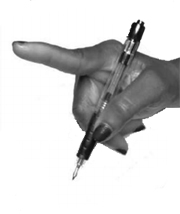Genetics
Mutations in the THAP1 gene (THAP domain containing, apoptosis-associated protein 1) encoding the transcription factor THAP1 are a cause of adolescent-onset dystonia with mixed phenotype (previously referred to as DYT6). A frameship mutation resulting in a stop codon was found in three Amish-Mennonite families, but about 100 different mutations have been reported in THAP1 including missense, nonsense, and frameshift mutations1.
Pathophysiology
The THAP domain is an atypical zinc-finger DNA-binding domain. Several DYT6 mutations impair THAP1 residues critical for DNA binding suggesting that THAP1 loss of function and the resultant transcriptional dysregulation are pathogenic mechanisms of DYT-THAP1 dystonia. However, not all mutations that fall within this region of THAP1 decrease its affinity for DNA, however, and some may enhance it.
As in most other dystonia forms, there seems to be no neurodegeneration and no specific disease-related pathology in DYT- THAP1.
Mode of Inheritance
As for DYT-TOR1A, the penetrance of DYT-THAP1 is highly reduced (to about 50%) and there is variable expressivity.
Clinical Presentation
DYT-THAP1 dystonia usually presents with spasmodic dysphonia or writer’s cramp in late childhood or adolescence, with average age of onset being 16 years. Over the course of the disease, dystonia spreads to other body parts with prominent craniocervical involvement: a segmental/multifocal or generalized distribution is more frequent than focal2. Laryngeal dystonia is typical.
Treatment
Deep brain stimulation should be considered as a therapeutic option despite an overall less favourable and less consistent response as compared to DYT-TOR1A.

